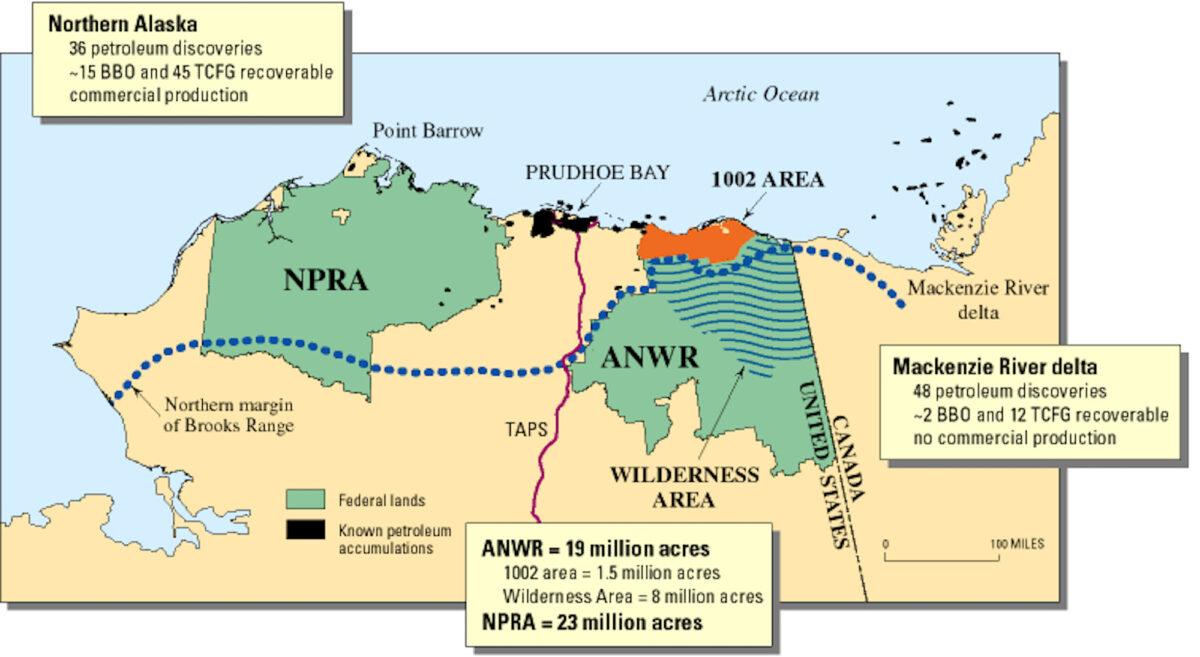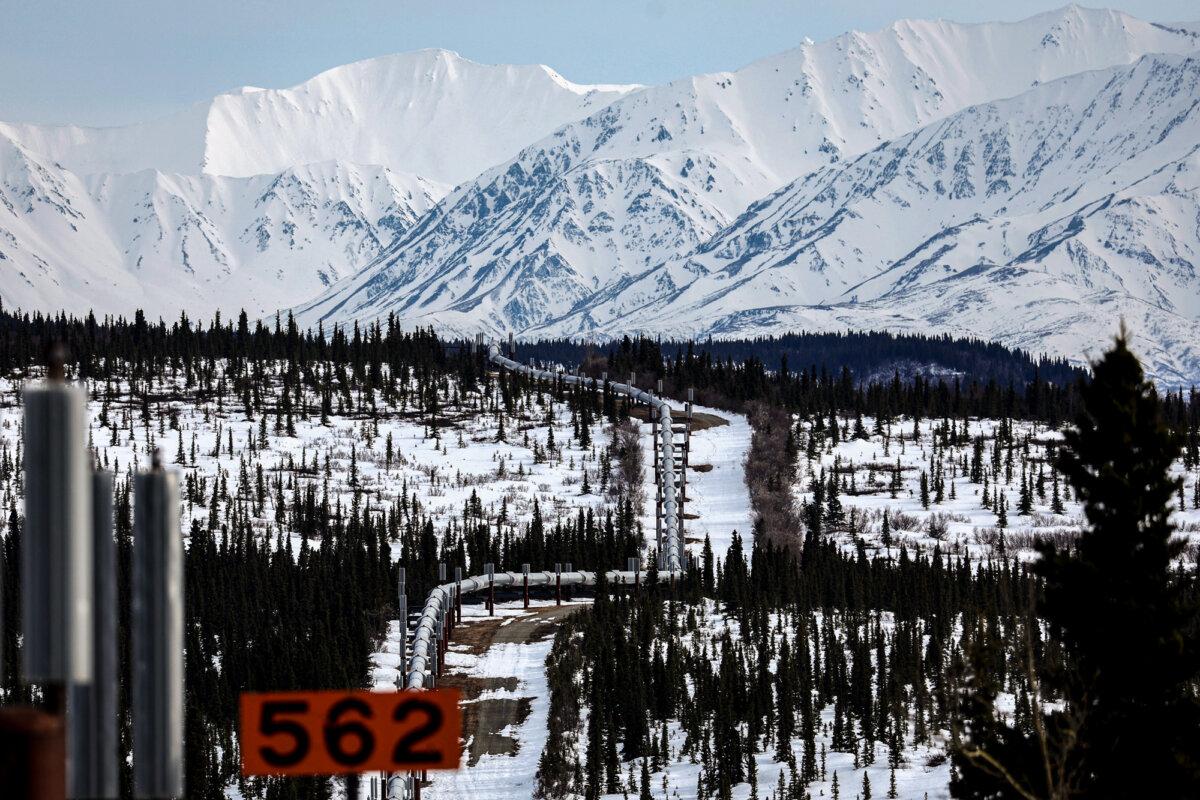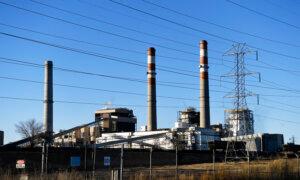Conservative think tanks offer House GOP blueprints to develop public land fossil fuels, while Democrats say ’taxpayers are footing the bill for Big Oil.’
With an average annual gain of $12,418, that would amount to $300,000 for a family of four by 2050, Heritage Foundation Center for data analysis director Kevin Dayaratna, a study co-author, told a House panel on April 2.
Three experts, including Dayaratna, touted studies mapping out the nation’s resources and offering guides on developing them in response to President Donald Trump’s energy policies and creating a sovereign wealth fund.
Interior Secretary Doug Burgum has repeatedly said the 500 million acres of public land, 700 million acres of subsurface minerals, and 2.5 billion offshore acres under his jurisdiction are, essentially, a long-mismanaged sovereign wealth fund that has never been accurately assessed or used for revenue generation. He will do both in his “unleash America’s balance sheet” plan to pay down the $37 trillion federal debt, which first requires “some mapping” to assess how much treasure is in the public land chest.
Contractors, including one boasting the world’s “largest private ocean sensor network,” and University of California San Diego Scripps Institute of Oceanography researchers were openly excited about joining public-private forays into uncharted waters certain to contain unmapped, untapped resources during the March 26 hearing.
There was similar exuberance a week later with Dayaratna, Energy Policy Research Foundation distinguished fellow Glen Sweetnam, and America First Policy Institute Director Matthew Jensen calling for Congress to use their blueprints to capitalize on abundant public land fossil fuels, especially natural gas, to power the economy and safeguard national security.
As of late March, nearly 10,000 leases for oil and gas development, incorporating 37 million acres of federal public lands primarily across eight western states, were managed by the Interior Department’s Bureau of Land Management. The bureau holds quarterly lease sales when there is enough land and enough interest to warrant 30-day sealed-bid auctions.
The bureau pledges at least 15 federal public land auctions in 2025 after holding 14 last year and 13 in 2023. The Biden administration suspended public lands oil and gas leasing in 2021 and much of 2022 for a climate-impact review.
the Interior Department’s Bureau of Ocean Energy Management is reviewing the five-year offshore oil and gas lease program for 1.7 billion coastal acres after Trump revoked Biden’s orders restricting offshore oil and gas development.

Map of northern Alaska and nearby parts of Canada showing locations of the Arctic National Wildlife Refuge (ANWR), the 1002 area, and the National Petroleum Reserve—Alaska (NPRA). USGS
Not So Fast
With offshore leases and expanded Alaska Arctic National Wildlife Refuge and National Petroleum Reserve leases being offered in 2025, an Energy Policy Research Foundation analysis calculates new area sales will yield $124.5 billion over the next 10 years while creating 200,000 short-term construction jobs and 7,500 long-term operation jobs.
America First Policy Institute’s Jensen said increasing onshore lease sales to annual “last-decade highs” and offshore to three sales a year could raise up to $58 billion over 10 years.
Dayaratna’s, Sweetnam’s, and Jensen’s rosy projections of increased energy production—primarily natural gas—on federal public lands, lowering consumer costs and generating export revenues, drew applause from Republicans.
“Now is the time to prioritize permitting these critical mining oil and gas investments here at home, which will allow not only a great return on federal revenue, but also provide for a more dependable and robust energy supply chain upon which we depend on every day,” Subcommittee Chair Rep. Mike Collins (R-Ga.) said.
He called for urgency in “working with the new administration on policies that improve the lives and pocketbooks of all Americans in the future.”
Not so fast, Democrats said, with Rep. Maxine Dexter (D-Ore.) claiming House Republicans are “trying to inflate the economic impact of unrestrained drilling on our most cherished lands” with a flood of “friendly” analyses from conservative organizations so the Congressional Budget Office “will think their estimates are real.”
“If the [Congressional Budget Office] can be convinced that drilling would make a lot of money for the federal government, Republicans would be allowed to give even more of your hard-earned taxpayer dollars to Big Oil,” she said, calling job-growth projections “hollow.”
“Over the past decade U.S. oil and gas, employment has declined by approximately 40 percent. At the same time,” Dexter said, “taxpayers are footing the bill for Big Oil” with $15 billion in annual subsidies.
She asked Southern Environmental Law Center senior attorney Megan Gibson if the production and revenue projections in the reports cited during the hearing “make sense?”
“What has resulted from that auction was less than 1 percent of what was originally put on the table” as projected revenues, she said, noting even with the Trump administration opening nearly 20 million areas of federal land in Alaska to oil and gas development, market analysts are not projecting an immediate lease rush.

A part of the Trans Alaska Pipeline System runs through boreal forest past Alaska Range mountains near Delta Junction, Alaska, on May 5, 2023. The 800-mile-long pipeline carries oil from the North Slope in Prudhoe Bay to the port of Valdez. Mario Tama/Getty Images
Data Duel
Dexter offered data from studies refuting claims from reports presented during the hearing, including from a March Energy Innovation Policy & Technology report and Climate Power’s Trump Impacts Tracker.
Dexter said the president and many Republicans want a complete repeal of 2022’s Inflation Reduction Act, which offers billions in tax credits for non-carbon energy development through 2035.
Repealing the act will cost nearly 800,000 jobs and increase energy bills by $32 billion over the next decade, costing families over $100 per year on average, she said, citing Energy Innovation Policy & Technology data.
“We’re already seeing the consequences,” Dexter said. “Utility companies in 16 states have hiked rates, some by as much as $32 per month, due to the uncertainty surrounding clean energy investments.”
Studies, forecasts, projections can all change, especially when estimating energy uses based on volatile commodities, such as oil and gas, which can be influenced by market pressures and politics, she said.
But it doesn’t take an ideological analysis to understand what generation mix saves consumers’ money, Gibson said.
In 10 of the top 12 states where “renewables have penetrated the grid,” she said, energy costs are “less for consumers.”
“We know that because people don’t have to pay as much on their energy bills. The proof’s in the pudding,” Gibson said.
Original News Source Link – Epoch Times
Running For Office? Conservative Campaign Consulting – Election Day Strategies!


